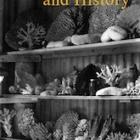Daley, Ben, and Peter Griggs. “ ‘Loved to Death:’ Coral Collecting in the Great Barrier Reef, Australia, 1770–1970.” Environment and History 14, no. 1 (Feb., 2008): 89–119. doi:10.3197/096734008X271878. Recent scholarship has investigated the rate of deterioration of the Great Barrier Reef of Australia since European settlement and the severity of human impacts on that ecosystem. Yet in previous environmental histories of the Great Barrier Reef, the impacts of coral collecting have not been adequately documented. Using documentary and oral history sources, a reconstruction of historical coral collecting is possible; analysis of those sources indicates that the extent, duration and intensity of coral collecting led to profound transformations of some coral reefs, with particular degradation at Double, Green, Heron, Masthead and Lady Musgrave Islands, and at Wistari Reef. That degradation was due to the combined impacts of prolonged, cumulative coral souveniring by tourists and to the removal of large amounts of material by commercial collectors. Although coral collecting has been restricted since 1933, both licensed and unlicensed collecting continued after that year. Extensive documentary evidence indicates that coral collecting was accompanied by the deterioration of coral reefs; those documentary accounts are supported by oral history evidence. Evaluation of the precise impacts of coral collectors in the Great Barrier Reef requires further scientific research and monitoring, although comparison with other coral reef ecosystems suggests that those impacts are likely to have been severe. All rights reserved. © 2008 The White Horse Press
"'Loved to Death:' Coral Collecting in the Great Barrier Reef, Australia, 1770–1970"
Daley, Ben, and Peter Griggs | from Multimedia Library Collection:
Environment and History (journal)


